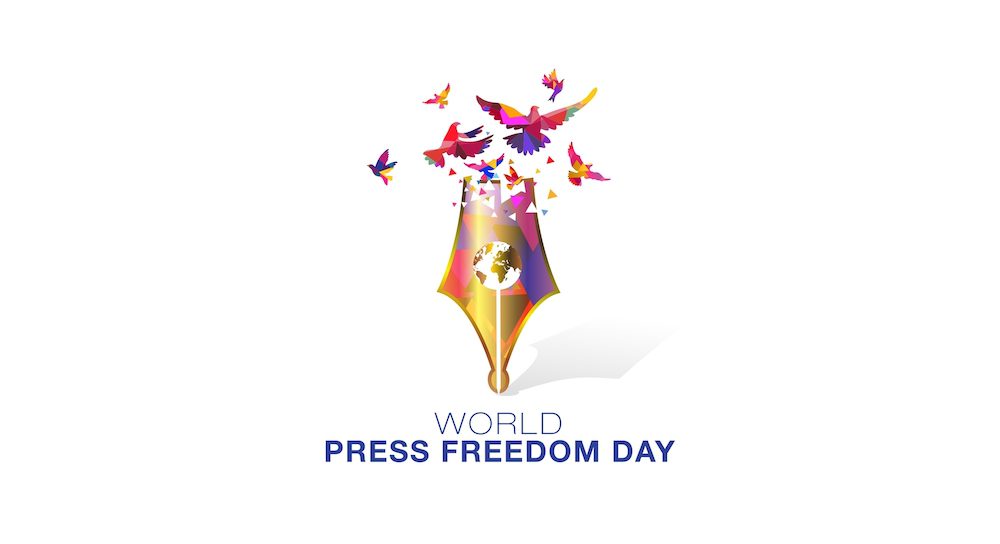World
PR Roundup: World Press Freedom Day, Mother’s Day Opt Out, Comms Not Prepped for Election

In this week’s PR Roundup we learn about supporting journalists, inclusive communications regarding Mother’s Day, and if communicators are already prepping messaging strategies for the 2024 election.
World Press Freedom Day
What happened: In 1993, the United Nations declared May 3 World Press Freedom Day. The day honors and observes the importance of journalism and the freedom to seek, report and distribute essential information around the globe.
According to the U.N. the day provides the opportunity to:
-
celebrate the fundamental principles of press freedom;
-
assess the state of press freedom throughout the world;
-
defend the media from attacks on their independence;
-
and pay tribute to journalists who have lost their lives in the line of duty.
The U.N. encourages the public and governments to remember this day, particularly with surrounding global tension and crisis.
This week the Pulitzer Prize Board touted press freedom in a statement, acknowledging “the tireless efforts of student journalists across our nation’s college campuses, who are covering protests and unrest in the face of great personal and academic risk.”
This especially hit home for the organization and Columbia University student journalists, as this is the location where the Pulitzer Prizes are housed.
Communication takeaways: In a world teeming with mis- and disinformation, where trust is taken at face value, journalists—who remain an essential part of the PR process—need support. Communicators can take initiative, such as on World Press Freedom Day and beyond to cement those relationships and offer support.
Linda Zebian, Senior Director of Communications at Muck Rack and former Executive Director of Corporate Communications at The New York Times, says as a community who relies on the press to help tell our stories, supporting journalists’ work professionally and personally is something we can all do all the time.
“Holding steadfast to supporting a free and independent press is essential to shed light on the issues that matter, share varying viewpoints and hold the powerful to account,” Zebian says.
She offers several ways to act including:
-
paying for access to news, particularly for nonprofit and local news organizations
-
reading and sharing journalism with networks and communities to help build audiences and spread awareness.
-
understand how the media ecosystem works and share that knowledge.
“Taking the time to educate folks outside of our industry about how news is made may help increase news literacy, which can in turn increase trust and support for journalists.”
Opting Out of Mother’s Day
What happened: Over the years many businesses relevant to the Mother’s Day economy (Etsy and Canva for example) started allowing users to opt out of Mother’s Day branded emails. The organizations understand that this content can be triggering to those without mothers, those in strained relationships or other difficult personal situations.
New research from email communications firm Omnisend found that of nearly one million opt-out emails sent this year, around 5 percent of recipients took this opportunity to unsubscribe. While 5 percent seems like a small number, when you think of it in terms of a million users, that’s almost 50,000 people whose lives have been impacted.
Research also shows that 91 percent of consumers react positively to holiday email opt-outs, and 81 percent of customers are more likely to purchase after receiving the option to opt-out. So even if the option is not applicable to them, it still is accepted as a smart business strategy.
“Even though 5% may seem like a small amount, I would still encourage businesses to send holiday opt-out emails,” says Greg Zakowicz, email marketing expert at Omnisend.
“Certain holidays, such as Mother’s Day or Father’s Day, can be difficult for some customers who have experienced loss,” he says. “Allowing customers to opt out of holiday-themed marketing emails can prevent unintentional distress and strengthen the business-customer relationship,”
Communication takeaways: Showing empathy in your communications is of utmost importance, especially when it comes to holidays. No one wants to feel excluded or pandered to. And negative reactions to these certain holidays aren’t just related to grief. Research shows back to school topics as the top event for unsubscribers.
Zakowicz says it’s easy to present users with an opt-out.
“To implement these strategies, businesses should use automation tools, offer clear and concise options, and regularly update and review their customer preferences,” he instructs. “We recommend sending out holiday opt-out emails before starting holiday campaigns, and to avoid sending opt-out campaigns to those who opted out in the past. Segment your audiences to ensure only those who should get holiday emails do.”
Prepping Comms for the 2024 Election
What happened: We know. Even that subhead makes you groan. It’s ok. You are not alone.
This week Shallot Communications released a new report: “The Communicators Have Spoken: How Companies are Approaching Communications for the 2024 Election.” It includes notable findings and recommendations on how to approach the upcoming 2024 election.
The biggest surprise from the study? Well, that electoral malaise may be creeping into the office. According to Shallot, with the election only six months away, only half of companies have started planning their election comms approach.
And as far as those communications, one-fifth of companies (21.6%) are planning content and partnership related to the election—election-related news hooks, surveys on policy topics, and ways to plug in one of their employees as an election-related expert.
Communication takeaways: Tim Granholm, Managing Partner, Shallot Communications says study responses show that there’s widespread concern about the election, with a fear of being perceived as partisan. He also notes many organizations desire to give clear guidance to employees about posting on social media channels.
“We’ve found that communications leads should drive planning and execution around elections—they understand employee sentiment, the external landscape, and how a CEO will be perceived if they do or don’t make a statement,” Granholm says. “This isn’t something a comms person does in a vacuum—they will do this by pulling in expertise from legal, public policy, HR, and CEO-office colleagues.”
Granholm also notes that the clock is ticking and putting in the work now will make communications much smoother in the long run.
“Companies need to get ahead of this now,” he says. “It’s much easier to decide on your point of view about potentially fraught issues—communicating on voting, various results (or lack of results), and a shifting regulatory landscape—when we’re far removed enough to be level-headed.”
Nicole Schuman is Managing Editor for PRNEWS.









